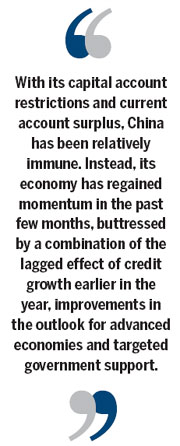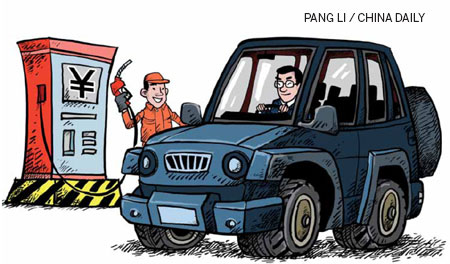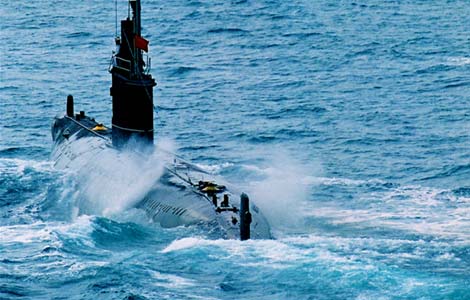Financial reform must continue
Updated: 2013-10-25 09:58
By Anoop Singh (China Daily Europe)
|
|||||||||||
Changes necessary looking at long-term economic growth in Asia
It has been a rocky few months for Asia, as decelerating growth has mixed unpleasantly with fears about the end of cheap global credit. During the first half of 2013, the region's economies underperformed relative to the International Monetary Fund's April projections, owing to tepid demand from advanced economies, a slowdown in China, as well as some softening in domestic demand.
Part of the decline in the region's fortunes is also structural, reflecting factors such as increasingly binding supply bottlenecks in India and declining returns to investment in China. The impact of these factors has become more visible as the effects of the post-global financial crisis stimulus used by Asian economies have dissipated, and will need to be addressed through bold structural reforms to boost the region's growth in the years ahead.
Of late, Asia has been hit hard by portfolio outflows in anticipation of the tapering of the US Federal Reserve's quantitative easing measures. As a result, assets have been significantly re-priced, especially in India and Indonesia, where fundamentals, notably in the form of high inflation and current account deficits, have been weaker.
So far, however, these developments have been well short of a dreaded repeat of the Asian financial crisis in 1997-98, owing in large part to the region's much improved macroeconomic fundamentals and policy frameworks. Indeed, the overall tightening of financial conditions has generally been limited, with exchange rate depreciation cushioning the impact of stock and bond market price declines.
With its capital account restrictions and current account surplus, China has been relatively immune. Instead, its economy has regained momentum in the past few months, buttressed by a combination of the lagged effect of credit growth earlier in the year, improvements in the outlook for advanced economies and targeted government support. And the excess capacity in a number of industries and stable food prices is helping contain inflation, laying the foundation for a soft landing and enabling a healthy shift of attention toward the medium term.
Looking forward, we expect Asia to grow by about 5 percent in 2013 and slightly higher in 2014, buoyed by a gradual pickup in external demand, as well as resilient domestic activity on the back of still-favorable financial and labor conditions. Inflation in most countries is expected to remain within central banks' comfort zones.
In China, ongoing measures to slow credit growth should put the economy on a lower but more sustainable growth trajectory in line with the government's objectives of about 7.5 percent in 2013. We project growth to further moderate to 7.3 percent in 2014. In light of this benign outlook, the government's focus has appropriately moved away from stimulus toward ensuring a more balanced and less-investment and credit-dependent pattern of growth.

Risks for Asia, however, have shifted to the downside. A further tightening of global funding conditions is possible, and would trigger renewed portfolio outflows, falling asset prices and tighter financial conditions. While trade channels will help over time as the US economy strengthens, the prospects of continued slow growth in advanced economies also presents a risk.
Within the region, the buildup of financial imbalances from loose credit in recent years poses risks to corporate and banking sector balance sheets, including those in China. Also, lack of progress on fiscal and structural reforms in Japan could also have adverse effects on the rest of Asia.
Based on this outlook, Asian policymakers need to strike a balance between supporting demand and ensuring financial stability while accelerating structural reforms. Recent developments also highlight the need for coherent macroeconomic frameworks that are clear, credible and well-communicated.
Current monetary stances, which remain relatively accommodative by historical standards, are appropriate in most countries and provide some insurance against downside risks. The recent tightening of credit conditions in Asia will only gradually dampen the region's strong credit growth and the early signs of financial overheating that had built up in some countries.
In this context, and in light of increased risks of further capital outflows, macro-prudential policies and micro-prudential supervision and regulation will continue to play a role in safeguarding financial stability. In such circumstances, exchange rate flexibility and appropriate use of buffers to smooth volatility should be part of the toolkit.
In China, maintaining recent efforts to rein in the growth of "shadow banking" remains a priority. The curtailing of credit since May is a healthy sign that the government is eschewing quick fixes to artificially boost activity in favor of managing financial risks. Further financial reform, including interest rate liberalization, is needed to safeguard financial stability, improve the allocation of credit and guide the economy to a more sustainable growth path. Some steps have been taken along this route in recent months, and the pace should now be accelerated.
On the fiscal front in Asia, space needs to be rebuilt to make room for future counter-cyclical policy and spending on priority areas for long-term growth, as well as to reduce vulnerability to current external risks. In China, we estimate that the general government debt, including local government liabilities, has doubled during the crisis to nearly 50 percent of GDP. While still not dangerously high, it is important to change the trajectory to move the economy toward a more self-sustaining growth path. In this respect, strengthening the management, transparency and overall governance framework of local government finances would help contain the stresses from growing local government debts.
If downside risks to growth materialize, there would still be room to provide some temporary and targeted fiscal stimulus, but this time through the central budget and measures aimed at lifting people's incomes and consumption rather than investment, in order to also facilitate the needed medium-term rebalancing of the economy.
Finally, as Asia's growth shifts to a lower gear and investors increasingly discriminate between countries based on economic fundamentals, the case for structural reforms to increase total factor productivity growth and weather future economic turbulence is becoming ever clearer. Specific agendas in different economies - ranging from reforms in goods and labor markets in most countries; energy sector and broader institutional reforms to boost infrastructure spending in India; and rebalancing toward consumption-driven growth in China - would go a long way toward fostering sustainable, balanced, and inclusive growth.
In China, the new leadership recognizes the primacy of reforms, including in key areas such as the financial sector and fiscal policy. All eyes are on the agenda to be unveiled at the Third Plenary Session of the 18th Central Committee of the Communist Party of China in November, which will help determine the future course of the Chinese economy, and thus will have important global implications.
The author is director of the IMF's Asia and Pacific Department. The views do not necessarily reflect those of China Daily.

(China Daily European Weekly 10/25/2013 page11)
Today's Top News
Mythbuster dispels fictions about China
Forum urges stableChina-Japan ties
NSA spying hurts US diplomacy
Carrier rocket sent to launch base for moon landing
Requirements cut for business startups
Study shows PM1 most harmful
Cold snap to sweep NE, N China
Paper apologizes for reporter's untrue stories
Hot Topics
Lunar probe , China growth forecasts, Emission rules get tougher, China seen through 'colored lens', International board,
Editor's Picks

|

|

|

|

|

|





